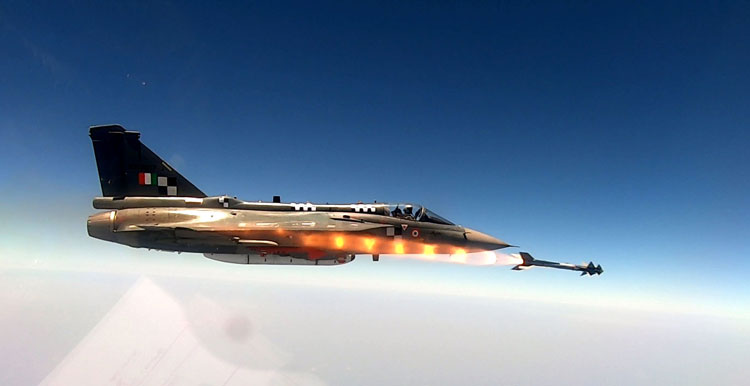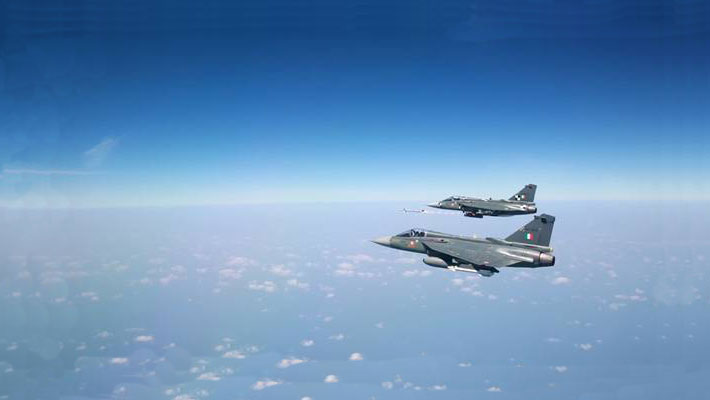INDIAN ARMED FORCES CHIEFS ON OUR RELENTLESS AND FOCUSED PUBLISHING EFFORTS

The insightful articles, inspiring narrations and analytical perspectives presented by the Editorial Team, establish an alluring connect with the reader. My compliments and best wishes to SP Guide Publications.

"Over the past 60 years, the growth of SP Guide Publications has mirrored the rising stature of Indian Navy. Its well-researched and informative magazines on Defence and Aerospace sector have served to shape an educated opinion of our military personnel, policy makers and the public alike. I wish SP's Publication team continued success, fair winds and following seas in all future endeavour!"

Since, its inception in 1964, SP Guide Publications has consistently demonstrated commitment to high-quality journalism in the aerospace and defence sectors, earning a well-deserved reputation as Asia's largest media house in this domain. I wish SP Guide Publications continued success in its pursuit of excellence.
- Prime Minister Modi Visits Punjab’s Adampur Air Base, Interacts with Airmen after Successful ‘Operation Sindoor’; Stern Message to Pakistan
- The layered Air Defence systems that worked superbly, the key element of Operation Sindoor
- Operation Sindoor | Day 2 DGMOs Briefing
- Operation Sindoor: Resolute yet Restrained
- India's Operation Sindoor Sends a Clear Message to Terror and the World – ‘ZERO TOLERANCE’
- Japan and India set forth a defence cooperation consultancy framework, talks on tank and jet engines
LCA Tejas Gets Python-5
Tejas multi-role supersonic fighter manufactured indigenously at the Hindustan Aeronautics Limited (HAL) is designed to carry a range of air-to-air, air-to-surface, precision-guided weapons. It provides a potent platform for aerial combat, offensive air support missions, and reconnaissance and anti-ship operations.
 |
The Author is Former Director General of Information Systems and A Special Forces Veteran, Indian Army |

On April 27, 2021, India's indigenous Light Combat Aircraft (LCA) ‘Tejas’ added fifth generation Python-5 Air-to-Air Missile (AAM) in its weapon inventory. This test firing in Goa completed a series of missile trials to validate its performance under extremely challenging scenarios. The Derby missile achieved direct hit on a high speed maneuvering aerial target and the Python missiles also achieved 100 per cent hits, thereby validating their complete capability. The trials met all its planned objectives. The trials were also aimed to enhance the capability of already integrated Derby Beyond Visual Range (BVR) AAM on Tejas.
The DRDO tweeted, “Tejas, India’s indigenous Light Combat Aircraft, added the 5th generation Python-5 Air-to-Air Missile (AAM) in its weapons capability on 27th April 2021. Trials were also aimed to validate enhanced capability of already integrated Derby Beyond Visual Range (BVR) AAM.” The decision to allow Tejas to carry the missile was taken on April 27 following a series of trials to validate the performance of the aircraft.
Tejas added the 5th generation Python-5 Air-to-Air Missile (AAM) in its weapons capability on 27th April 2021.
Prior to these trials, extensive missile carriage flight tests were conducted at Bangaluru to assess integration of the missile with aircraft systems on board the Tejas like avionics, fire-control radar, launchers, Missile Weapon Delivery System and the Flight Control system. At Goa after successful separation trials, live launch of the missile on a Banshee target was carried out. Python-5 missile live firing was conducted by test pilots from the National Flight Test Centre (NFTC) of the Aeronautical Development Agency (ADA) which comes under the Department of Defence Research and Development (DR&D) of the Ministry of Defence (MoD). The successful conduct was made possible with years of hard work by the team of scientists, engineers and technicians from ADA and HAL-ARDC along with admirable support from CEMILAC, DG-AQA, IAF PMT, NPO and INS Hansa.

Tejas is a single engine, light weight, highly agile, multi-role supersonic fighter manufactured indigenously at the Hindustan Aeronautics Limited (HAL) and designed by the ADA for the Indian Air Force (IAF) and the Indian Navy (IN). It is designed to carry a range of air-to-air, air-to-surface, precision-guided weapons. It provides a potent platform for aerial combat, offensive air support missions, and reconnaissance and anti-ship operations. In February 2021, the MoD signed a 48,000 crore deal with the HAL to procure 83 x Tejas LCA in the biggest-ever indigenous defence procurement program.
Trials conducted were also aimed to validate enhanced capability of already integrated Derby Beyond Visual Range (BVR) AAM
The Python-5 missile has been developed by the Israeli defence company Rafael Advanced Defense Systems. It is the newest member of the Python family. This fifth generation air-to-air missile enables the pilot engaging an enemy aircraft with a revolutionary full sphere launch capability. It can be launched from very short to beyond visual range with greater kill probability, excellent resistance to countermeasures, irrespective of evasive target manoeuvers or deployment of countermeasures. It is a dual use missile suitable for air-to-air and air-to-surface missions. It is powered by a solid propellant rocket engine. The propulsion system provides a speed of Mach 4 and an operational range of more than 20 km. It is also equipped with lock-on-before launch (LOBL) and lock-on-after launch (LOAL) capabilities. The imaging infrared seeker and sophisticated algorithms onboard Python-5 enables it to acquire small and low-signature targets, which includes even the UAVs and cruise missiles.
A beyond visual range air-to-air missile (BVRAAM) is capable of engaging targets at ranges of 37 km and beyond. This range has been achieved using dual pulse rocket motors or booster rocket motors and ramjet sustainer motors. In addition to the range capability, the missile is also capable of tracking its target at this range or acquiring the target during flight. BVRAAM technology enables the fighter pilots to shoot precisely at the enemy targets which are beyond their visual range. India’s indigenous ‘Astra’ missile works on BVRAAM.
The imaging infrared seeker and sophisticated algorithms onboard Python-5 enables it to acquire small and low-signature targets, which includes even the UAVs and cruise missiles
Immediately after India reported integration of the Python-5 missile on Tejas, China’s Global Times reported that JF-17 Block 3 fighter jet, produced jointly by China and Pakistan, was armed with PL-10 air-to-air missile, which also powers China’s fifth-generation J-20 aircraft. It further said that while previous JF-17s were armed with the old PL-5 missiles, the new PL-10 short-range combat missile represents the highest level of its kind. The PL-10 also comes with a ‘lock on after launch’ (LOAL) capability, enabling it with beyond the within visual range (BVR) capability but the Python-5 has been battle-tested in wars globally while the PL-10 is not tested in combat and China routinely indulges in inflating capabilities of its weapons and weapon systems as part of propaganda.
The China-Pakistan JF-17 itself is getting notorious because of its poor performance. The key reason cited is its single RD-93 engine which is known for its poor serviceability. The other problems of the JF-17 are "Nose Landing Gear shimmies while taxiing and a number of aircraft experience nose wheel vibrations. As for the Python-5, most experts regard Python-5 as a more reliable and advanced missile than the Chinese PL-10. Tejas is now equipped or tested with at least four air-to-air missiles, which include the Python-5, R-73E, Derby and I-Derby. Tejas, therefore, will have increased export potential given the wide range of weaponry it can carry.





